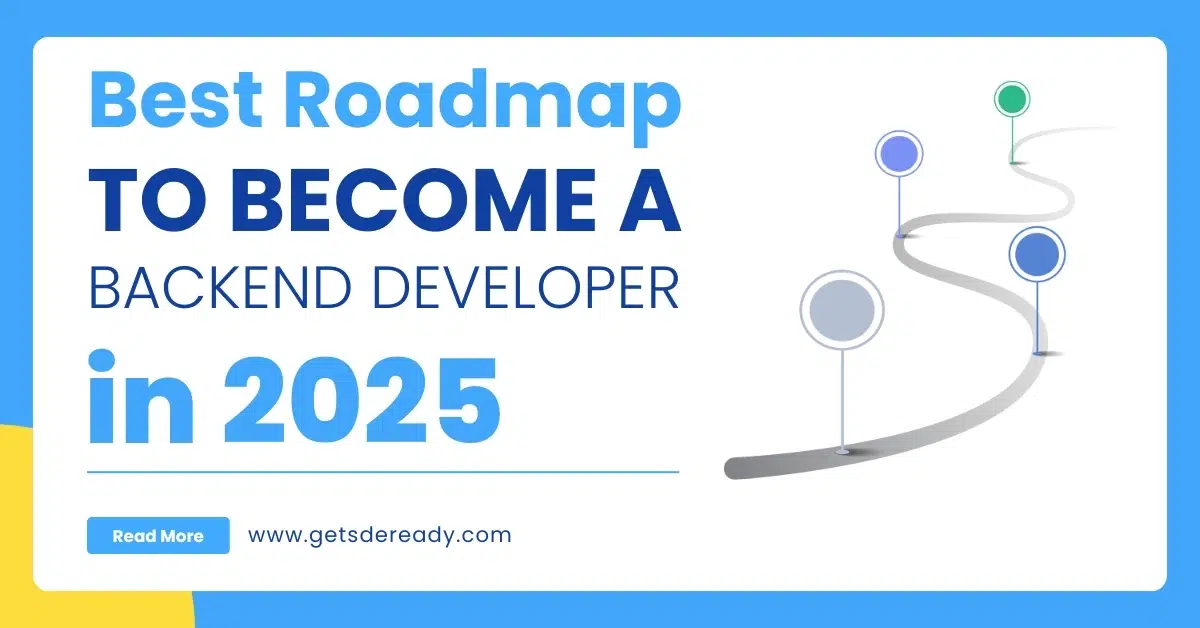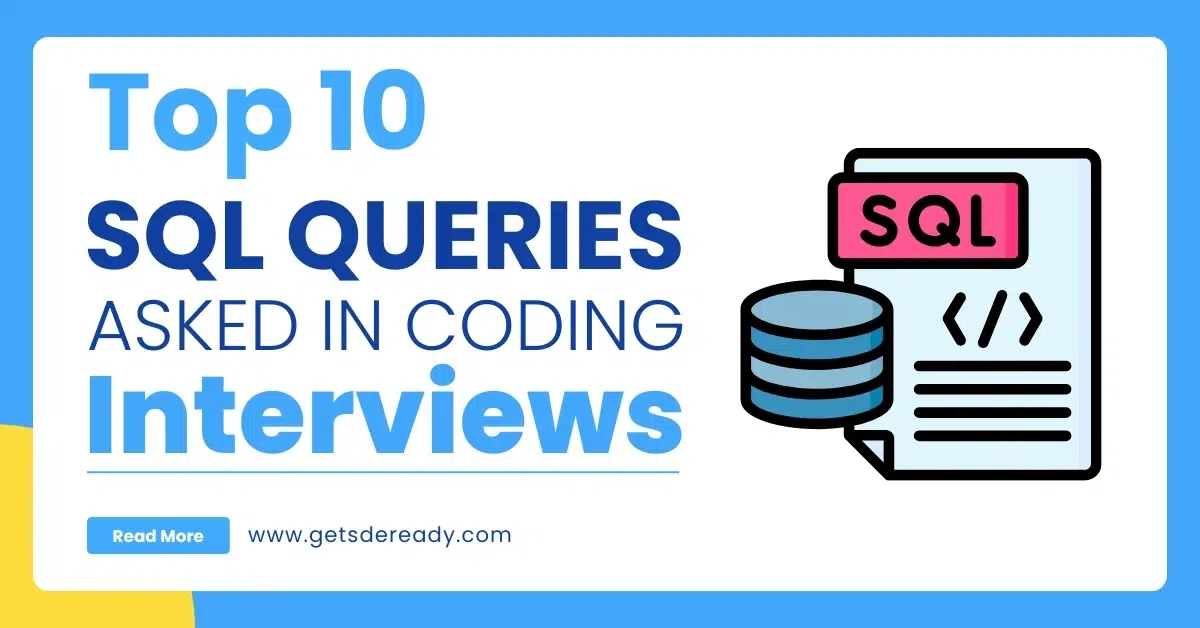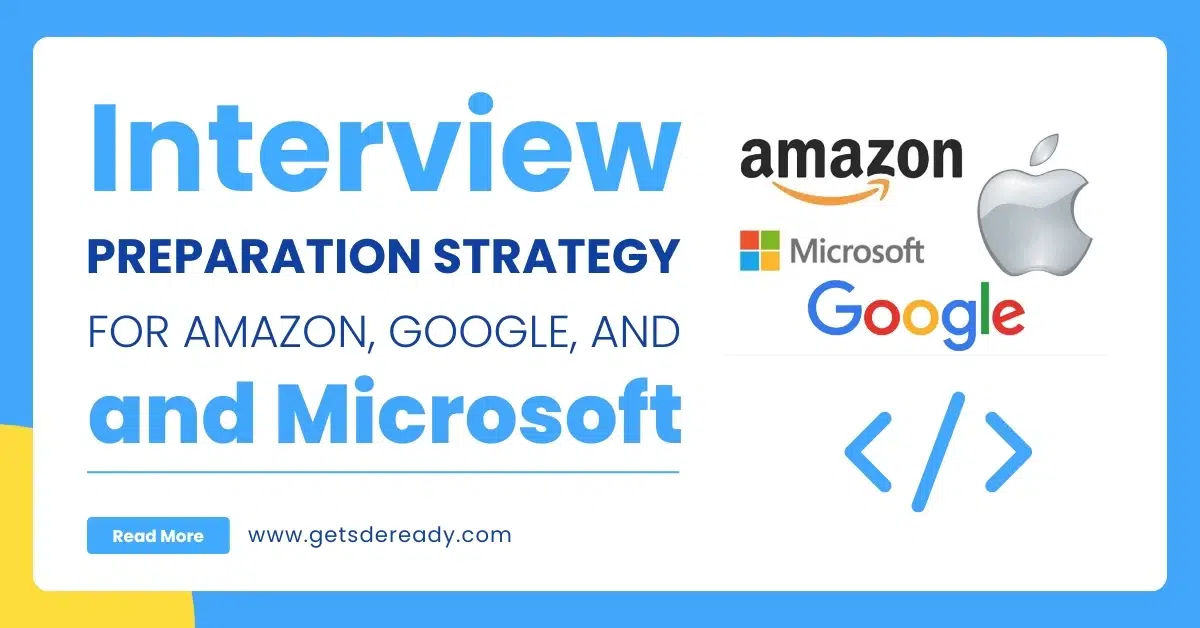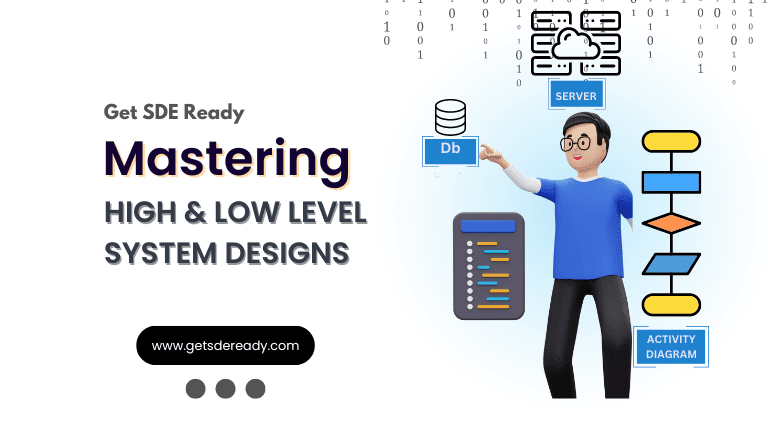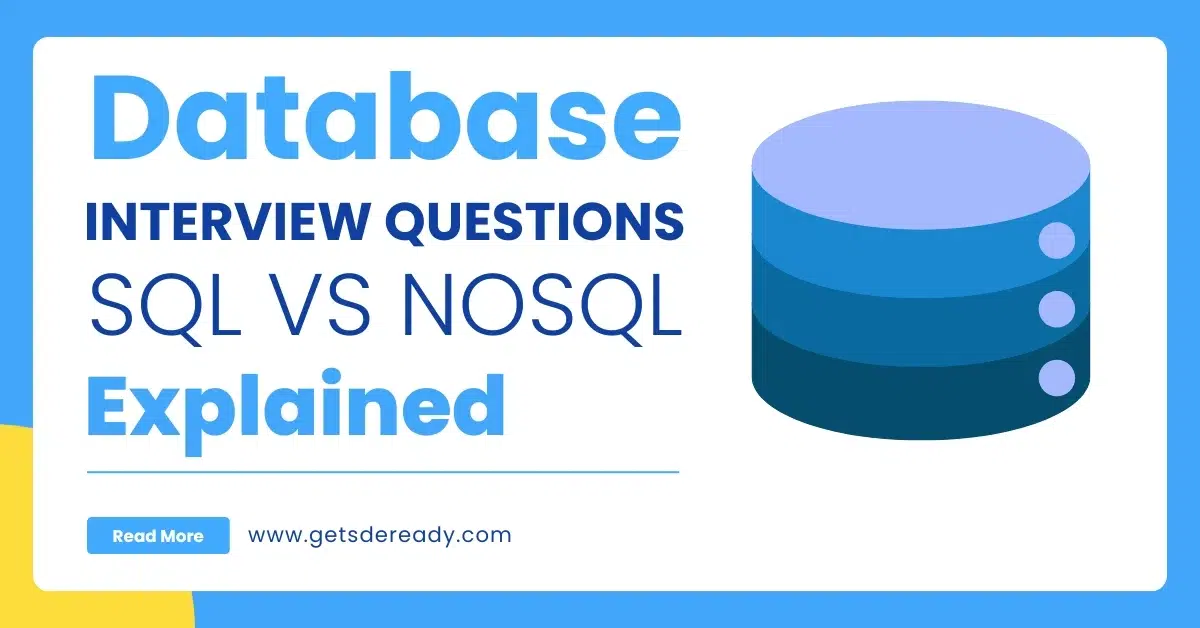
Top 20 Questions on APIs and RESTful Design for Web Developers
When it comes to building robust and scalable web applications, APIs (Application Programming Interfaces) and RESTful design are two critical components that every web developer should master. They allow different software systems to communicate and exchange data seamlessly. If you’re looking to advance your skills in web development, understanding APIs and RESTful design principles is essential.
In this article, we will dive into the top 20 questions that every web developer should be familiar with when working with APIs and RESTful design. By the end of this guide, you’ll have a solid understanding of the most common questions surrounding these topics. Also, if you’re interested in enhancing your API skills, consider enrolling in our free course and getting the latest updates on upcoming courses—Check out our course here.
1. What is an API?
An API (Application Programming Interface) is a set of protocols that allow different software applications to communicate with each other. It defines the rules for how one software application can request services or data from another application.
Key Points to Remember:
- APIs define how requests for information and services should be made.
- They allow systems to interact in a standard, understandable way.
APIs are fundamental in today’s web development landscape, enabling integrations with third-party services, accessing databases, or interacting with other applications. Understanding how APIs work and how they are implemented is a vital skill for web developers.
Recommended Topic: Top 10 Frontend Design Questions
2. What is RESTful API Design?
REST (Representational State Transfer) is an architectural style for designing networked applications. RESTful API design follows a set of constraints that provide guidelines on how to create APIs that are simple, scalable, and maintainable.
Key Points to Remember:
- RESTful APIs are stateless; each request from a client to the server must contain all necessary information to understand and process the request.
- REST APIs use standard HTTP methods like GET, POST, PUT, DELETE to interact with resources.
RESTful APIs focus on resources and use standard HTTP methods to perform operations on them. Each resource has a unique URL, and the HTTP methods define the operation to be performed on that resource.
For a deeper understanding of what makes engineering successful, you can watch Arun Goel’s video Building Blocks to Success: An Engineer’s Guide to Making it Big in Tech to gain valuable insights on navigating the engineering path to success.
3. What are the HTTP Methods in REST?
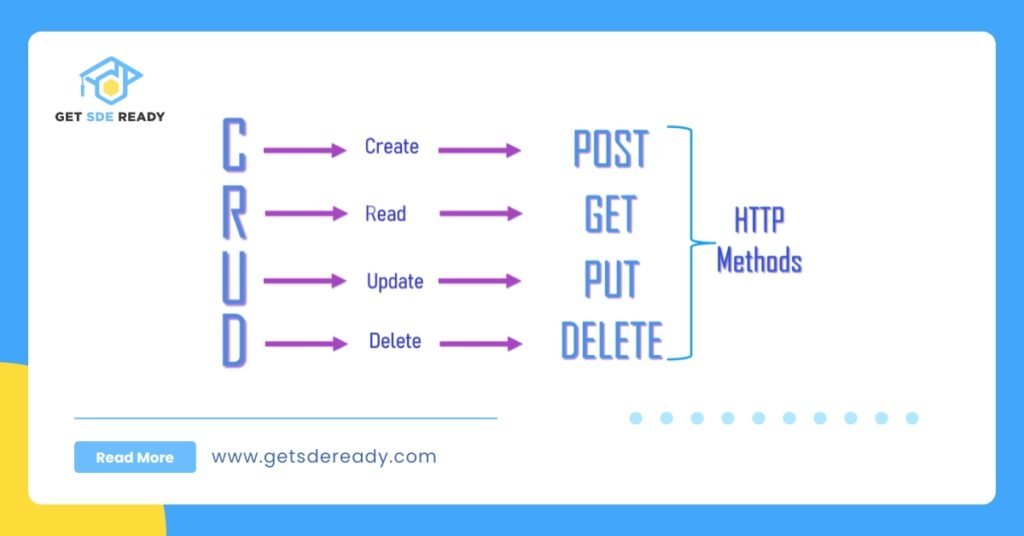
In RESTful design, HTTP methods are the fundamental ways to interact with the resources exposed by an API.
Key Points to Remember:
- GET is used to retrieve data from a server.
- POST is used to send data to a server to create a new resource.
- PUT is used to update an existing resource on the server.
- DELETE is used to remove a resource from the server.
Understanding the correct use of these HTTP methods is essential for building efficient and predictable APIs.
Also Read: Top 10 API Design Questions
4. What is the Difference Between REST and SOAP?
While both REST and SOAP (Simple Object Access Protocol) are protocols for web services, they differ significantly in terms of design principles and communication methods.
Key Points to Remember:
- REST is lightweight and uses HTTP for communication, while SOAP relies on XML and can use other protocols like SMTP and JMS.
- RESTful services are stateless and more flexible, whereas SOAP requires a fixed contract, making it more rigid.
Choosing between REST and SOAP depends on your project’s needs. REST is more commonly used in modern web applications due to its simplicity and efficiency.
Check out the video on Singleton Design Pattern Explained for a detailed explanation of its use in multithreaded environments.
5. What is JSON, and Why is it Commonly Used in APIs?
JSON (JavaScript Object Notation) is a lightweight data format used to exchange data between a client and a server. It is human-readable and easy for both machines and humans to generate and parse.
Key Points to Remember:
- JSON is preferred for APIs because it is lightweight and can be easily parsed into objects in most programming languages.
- It is language-independent, making it a versatile choice for APIs.
JSON’s popularity stems from its simplicity and efficiency, making it the default choice for most modern APIs.
To master core principles of system design, you can check out Arun Goel’s video Master the Open-Close Principle | SOLID Principles Simplified | Get SDE Ready for a better understanding of designing scalable software systems.
6. What is an Endpoint in an API?
An endpoint is a specific URL where an API can be accessed. Each endpoint corresponds to a unique resource or a collection of resources that can be manipulated via HTTP methods.
Key Points to Remember:
- Endpoints are where the client sends requests to interact with the resources provided by the server.
- Well-designed endpoints are descriptive and easy to understand.
Good endpoint design is essential for an API to be intuitive and easy to use. They should reflect the resource being accessed, making them user-friendly and straightforward.
Also Read: Top 15 DSA Questions on Arrays & Strings
7. What are Status Codes in RESTful APIs?
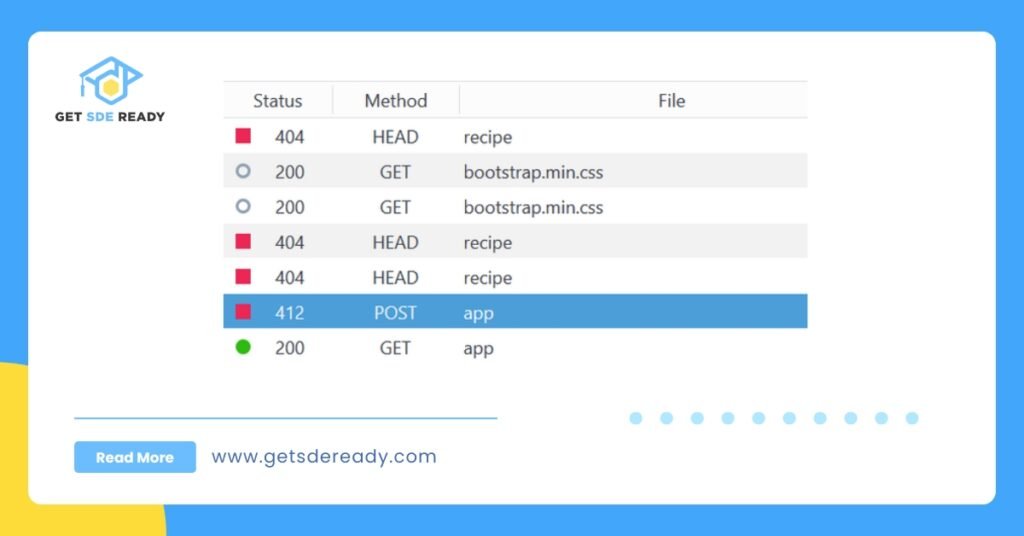
HTTP status codes are part of the response that indicates the result of the API request. These codes provide insight into whether the request was successful, failed, or if there were errors.
Key Points to Remember:
- 200 indicates a successful request.
- 400 signals a bad request, usually due to malformed syntax.
- 404 means the requested resource could not be found.
- 500 indicates a server error.
Using appropriate status codes in your API responses helps clients understand the outcome of their requests.
8. What is Authentication and Authorization in APIs?
Authentication verifies the identity of a user or application, while authorization determines what an authenticated user or application is allowed to do.
Key Points to Remember:
- Authentication is the process of verifying the identity of a user or system.
- Authorization determines the permissions granted to an authenticated user.
Implementing secure authentication and authorization mechanisms, such as OAuth or JWT (JSON Web Tokens), is critical for protecting sensitive data in your APIs.
Also Read: Top 10 Cloud App Design Questions
9. How Does Pagination Work in RESTful APIs?
Pagination is a technique used in APIs to return large sets of data in smaller, more manageable chunks.
Key Points to Remember:
- Pagination helps optimize performance by reducing the amount of data sent in a single response.
- Common methods for pagination include offset-based and cursor-based pagination.
By limiting the number of records returned per request, pagination ensures your API remains responsive and efficient.
10. How Do You Handle Errors in a RESTful API?
Proper error handling is crucial in ensuring that your API provides meaningful feedback to the client, helping developers diagnose and fix issues.
Key Points to Remember:
- Always return an appropriate HTTP status code that matches the error.
- Include a message in the response body to provide more details about the error.
Good error handling practices are essential for providing a smooth user experience and making your API easier to debug.
Recommended Topic: Top 10 Distributed System Design Challenges
11. What is Rate Limiting in APIs?
Rate limiting is the process of restricting the number of requests a client can make to an API within a certain time frame.
Key Points to Remember:
- It prevents abuse and ensures fair usage of API resources.
- Common techniques for rate limiting include token bucket and leaky bucket algorithms.
Rate limiting is essential for protecting your API from overload and ensuring equitable access to resources.
For an inspiring perspective on why engineering is the best field, check out Arun Goel’s insightful video on What is Success in Engineering | Why Engineering is Best | Reality of Engineering.
12. What is CORS in API Design?
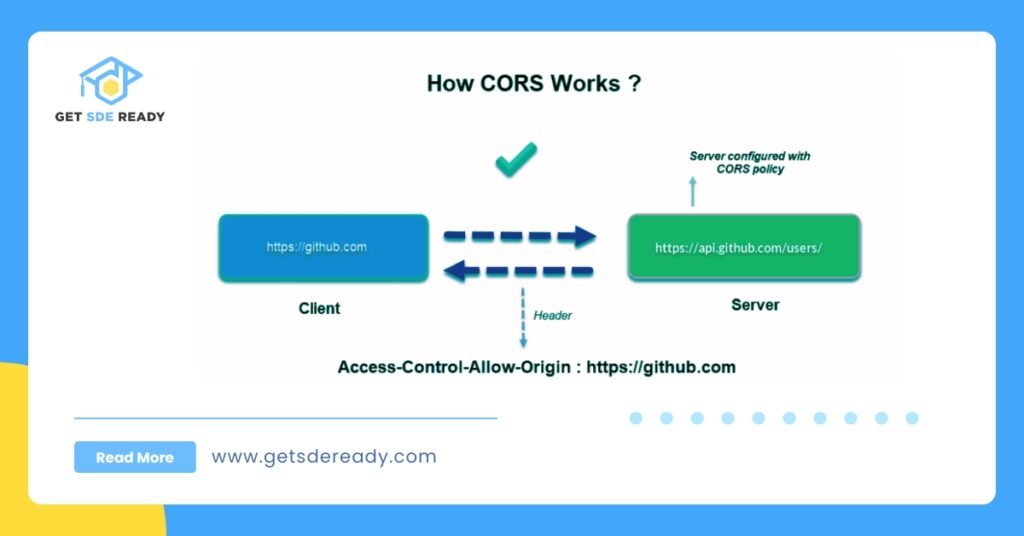
CORS (Cross-Origin Resource Sharing) is a security feature that allows or restricts resources on a web server to be requested from a domain outside the domain from which the resource originated.
Key Points to Remember:
- CORS is used to prevent security vulnerabilities like cross-site request forgery (CSRF).
- Developers must configure CORS headers correctly to enable or restrict access from different domains.
Understanding CORS is essential for enabling or securing cross-origin requests when building APIs.
Recommended Topic: Top 20 DSA Questions for 2025 Interviews
13. What is WebSocket, and How Does it Relate to APIs?
WebSockets provide full-duplex communication channels over a single TCP connection. They allow for real-time communication between the client and server, which is essential for building interactive web applications.
Key Points to Remember:
- WebSockets are ideal for applications like online games, chat apps, and stock trading platforms.
- WebSocket communication is more efficient than HTTP for real-time applications.
WebSockets are not typically used in traditional REST APIs, but they complement RESTful APIs by providing real-time data streams.
14. What is API Documentation?
API documentation is a detailed reference guide that describes the API’s functionality, including how to use it, what endpoints are available, and what responses to expect.
Key Points to Remember:
- Good documentation improves the developer experience by making it easier to integrate with the API.
- Tools like Swagger and Postman are commonly used to create and test API documentation.
Comprehensive API documentation is essential for ensuring that developers can easily understand and use your API.
15. What are Webhooks in APIs?
A webhook is a user-defined HTTP callback that allows one system to send data to another system when an event occurs.
Key Points to Remember:
- Webhooks are used for real-time notifications.
- They are often used to integrate third-party services, such as payment gateways or messaging apps.
Webhooks provide a lightweight, real-time alternative to traditional polling in APIs.
Also Read: Top 15 Companies Asking Advanced Design
16. What is API Versioning?
API versioning refers to the practice of managing changes to your API without breaking existing clients.
Key Points to Remember:
- Different versioning strategies include URL versioning, parameter versioning, and header versioning.
- API versioning is crucial when evolving an API over time to ensure backward compatibility.
Versioning helps ensure that existing clients are not affected when new features are added to the API.
17. What is the Role of HTTP Headers in RESTful APIs?
HTTP headers are key-value pairs sent with HTTP requests and responses. They provide essential metadata about the request or the response.
Key Points to Remember:
- Common headers include Authorization, Content-Type, and Accept.
- Headers help manage caching, security, and data format specifications.
Headers are vital for controlling API behavior and ensuring proper communication between clients and servers.
18. How Do You Secure a RESTful API?
Securing your RESTful API is critical for protecting sensitive data and ensuring that only authorized users can access certain resources.
Key Points to Remember:
- Use OAuth or JWT for secure authentication.
- Ensure that data is transmitted over HTTPS to prevent eavesdropping.
API security is essential for protecting your application from attacks and unauthorized access.
Also Read: 10 Tips for Mastering FAANG Design
19. What is HATEOAS in RESTful APIs?
HATEOAS (Hypermedia As The Engine of Application State) is a constraint of RESTful APIs where the client interacts with the API entirely through hyperlinks.
Key Points to Remember:
- HATEOAS allows the API to guide the client by providing links to relevant resources.
- It makes APIs more discoverable and easier to navigate.
HATEOAS enhances the flexibility of an API by enabling the client to dynamically discover available actions.
20. What is the Best Practice for API Design?
When designing APIs, following best practices is essential for creating robust, maintainable, and efficient APIs.
Key Points to Remember:
- Use meaningful endpoint names that reflect the resource being accessed.
- Ensure the API is consistent in terms of naming conventions, error handling, and response formatting.
- Keep the API documentation up-to-date.
Best practices in API design help ensure that your API is easy to use, secure, and scalable.
Recommended Topic: Top 10 SQL Queries for Web Dev Interviews
Frequently Asked Questions
1. What is the difference between RESTful APIs and REST APIs?
RESTful APIs are those that adhere strictly to the principles of REST (Representational State Transfer), ensuring statelessness and separation of concerns. On the other hand, REST APIs might not fully follow the REST principles but still allow HTTP methods for resource interaction. If you want to dive deeper into API design, check out our courses on Web Development and Design & DSA Combined.
2. How does API authentication work in RESTful services?
API authentication in RESTful services is commonly handled using tokens like JWT (JSON Web Tokens). These tokens ensure secure communication between the client and the server by verifying user credentials. Explore more on authentication techniques by exploring our Master DSA, Web Dev, and System Design course.
3. Can RESTful APIs be used with GraphQL?
Yes, RESTful APIs can be used alongside GraphQL. While REST provides predefined endpoints for resources, GraphQL offers flexibility by allowing clients to query only the data they need. To learn how to integrate GraphQL into your system, consider our Web Development course for hands-on practice.
4. What are the best practices for designing RESTful APIs?
Some key best practices for RESTful API design include using proper HTTP methods, being stateless, ensuring proper versioning, and following consistent naming conventions. To master these practices and more, join our DSA & Web Dev courses, where we cover fundamental concepts in-depth.
5. How do RESTful APIs handle error management?
RESTful APIs handle errors using standard HTTP status codes. Codes like 400 for bad requests, 404 for not found, and 500 for server errors are used to convey the status of an API request. Learn about effective error handling strategies in our Data Science course to enhance your development skills.
Accelerate your Path to a Product based Career
Boost your career or get hired at top product-based companies by joining our expertly crafted courses. Gain practical skills and real-world knowledge to help you succeed.
Reach Out Now
If you have any queries, please fill out this form. We will surely reach out to you.
Contact Email
Reach us at the following email address.
arun@getsdeready.com
Phone Number
You can reach us by phone as well.
+91-97737 28034
Our Location
Rohini, Sector-3, Delhi-110085
